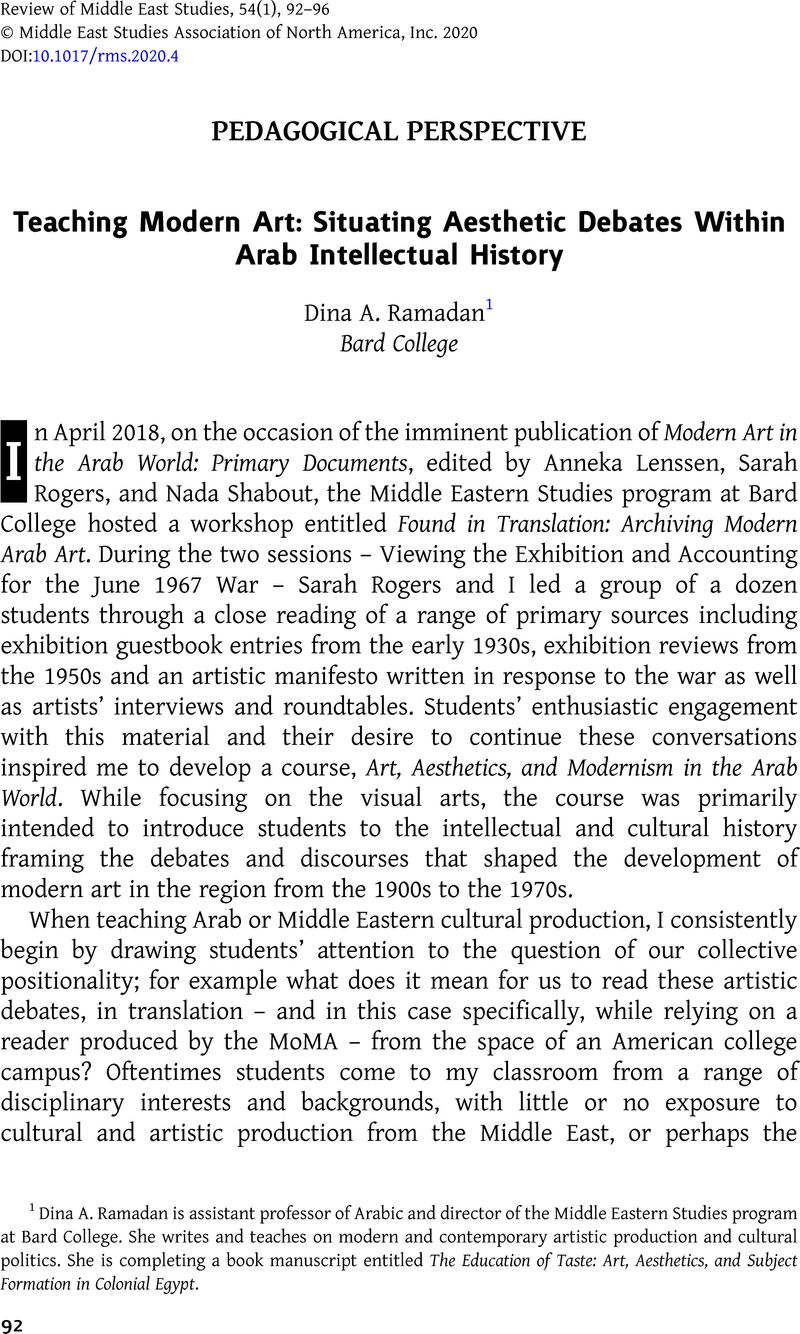No CrossRef data available.
Article contents
Teaching Modern Art: Situating Aesthetic Debates Within Arab Intellectual History
Published online by Cambridge University Press: 21 October 2020
Abstract

- Type
- Pedagogical Perspective
- Information
- Copyright
- Copyright © Middle East Studies Association of North America, Inc. 2020
Footnotes
Dina A. Ramadan is assistant professor of Arabic and director of the Middle Eastern Studies program at Bard College. She writes and teaches on modern and contemporary artistic production and cultural politics. She is completing a book manuscript entitled The Education of Taste: Art, Aesthetics, and Subject Formation in Colonial Egypt.
References
2 Like many small liberal arts colleges, the art history and film programs at Bard College have limited offerings on the modern (or contemporary) non-West. Many of the observations I make here are equally applicable to a course I have taught titled Middle Eastern Cinemas.
4 Artists from Libya, Somalia, Syria, and Yemen were noticeably absent, however this curatorial intervention was accompanied by a series of film screenings that sought to rectify this.
8 Prita Meier, “Authenticity and Its Modernist Discontents: The Colonial Encounter in African and Middle Eastern Art History,” The Arab Studies Journal 18:1 1 (Spring 2010): 12-44; and Keith Moxey, Is Modernity Multiple? http://www.columbia.edu/cu/arthistory/courses/Multiple-Modernities/moxey-essay.html.
10 I am thinking specifically here of the introductions to Ali, Wijdan, Modern Islamic Art: Development and Continuity (Gainesville: University Press of Florida, 1997)Google Scholar and Shabout, Nada, Modern Arab Art: Formation of Arab Aesthetics (Gainesville: University Press of Florida, 2007)Google Scholar.
11 Rogers, Sarah, “Daoud Corm, Cosmopolitan Nationalism, and the Origins of Lebanese Modern Art,” Arab Studies Journal 18: 1 (Spring 2010): 46-77Google Scholar.
12 Scheid, Kirsten, “Necessary Nudes: Hadatha and Mu'asara in the Lives of Modern Lebanese,” International Journal of Middle East Studies 42 (2010): 203-30CrossRefGoogle Scholar.




